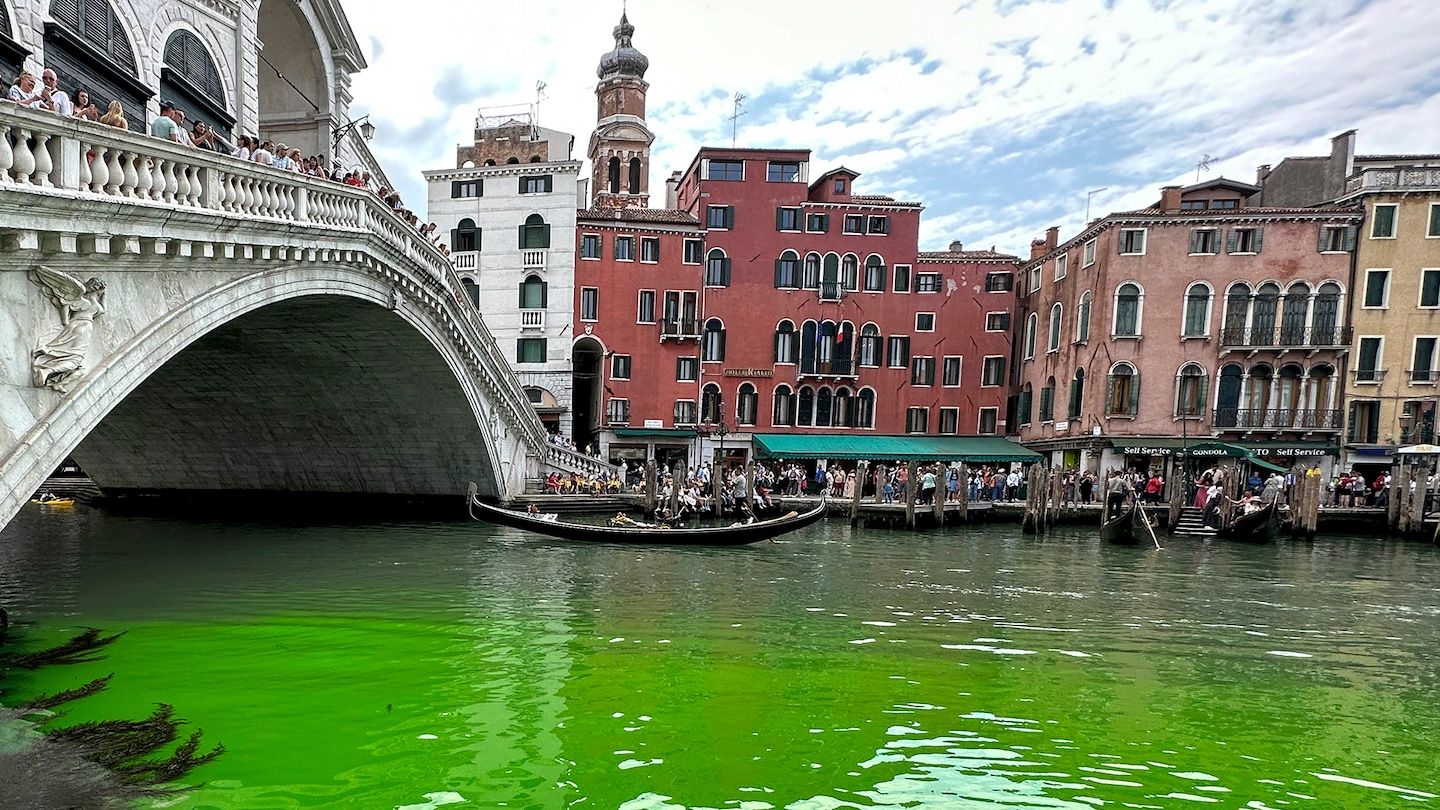Venice Grand Canal waters turn green; investigation launched
A patch of fluorescent green water appeared in Venice's Grand Canal on May 28, prompting an investigation. (Video: Reuters)
Listen 2 min Comment on this story Comment Gift Article Share
A patch of water in Venice’s famed Grand Canal has turned fluorescent green, stumping residents and tourists and prompting an investigation involving police, the regional environmental agency and other local bodies. Are you on Telegram? Subscribe to our channel for the latest updates on Russia’s war in Ukraine. ArrowRight The green swath of water was spotted by residents near the Rialto Bridge on Sunday, tweeted Luca Zaia, head of Veneto region, adding that an “urgent meeting” had been convened by the administration.
The regional environmental agency said in a statement that it had inspected the area and taken samples from the water. The initial analysis suggested that there were no substances deemed harmful for the environment, the agency said. More tests will be conducted Monday.
The agency said it suspected that fluorescein, a powdered dye that can be diluted in water, had been used. It added that the substance can help in the management of sewage systems.
Lined by historical palaces and churches, the Grand Canal is a major waterway that is often jammed with tourists and gondolas. The Rialto Bridge, near where the water turned green, is the oldest crossing on the canal and known as an emblem of Renaissance-era construction and technology.
Climate activists poured vegetable charcoal into Rome’s Trevi Fountain on May 21 to protest Italy’s fossil fuel funding. (Video: John Farrell/The Washington Post)
The incident was reminiscent of when Argentine artist Nicolás García Uriburu released fluorescein into the Grand Canal during the 1968 Venice Biennale. The dye temporarily turned the water phosphorescent, and the act was cast as a way to promote ecological awareness. On Sunday, local media suggested that an environmental group could have been responsible.
Advertisement
Venice, which was pummeled by major floods in 2019, is one of the world’s most fragile cities. It is particularly threatened by rising sea levels, which have prompted the city to mount an ambitious $6 billion project designed to save it from flooding. The city has also instituted stringent rules for tourists that authorities say help preserve the environment.
A wave of disruptive actions by environmental awareness groups has recently swept across Europe, including in Italy. In May, activists affiliated with the Last Generation climate action group stepped into Rome’s Trevi Fountain, a popular tourist spot, and poured diluted charcoal into the water to protest the use of fossil fuels and highlight recent flooding in northern Italy that killed at least 13 people. They were arrested and face vandalism charges.
The group has frequently staged what it describes as civil disobedience actions across prominent tourist spots in Italy, which have included spraying paint on historical buildings and throwing soup on a Van Gogh painting.
GiftOutline Gift Article
Source: The Washington Post


